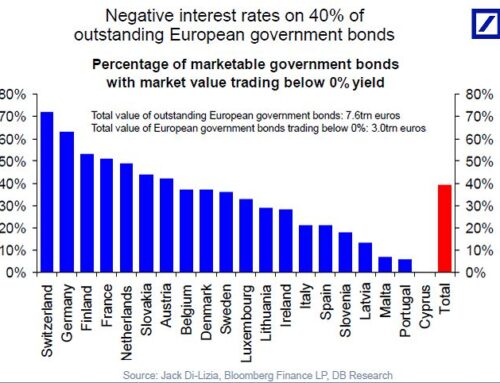The Indian banking system is going through some worst of its time. Big NPA mess, visible two different parts, shadow lender AKA NBFCs outside of regulation. Besides that, the situation is worst when we realize that visibly Indian baking is not one but 2. Private ( Which are now largely foreign banks) and the Public sector. ( They were on the verge to balance, but bank recapitalization makes them government-owned up to 90% in some cases.) So NPA is an issue for both of them; it is a more significant issue for Shadow lenders, aka NBFCs like IL&FS.
Within Indian Banks, the public sector banks (banks owned by the Central/State govt.) face huge NPAs. On the other hand, private sector banks like ICICI, HDFC, Axis, etc., have NPAs, but they are relatively negligible compared to public sector banks. Usually, the banks have a conservative credit policy which has many filters such as previous credit profile, if the loan seeker has defaulted in the past, his cash flow, i.e., if his future income is stable and reliable, if it is a secured loan, then if the property/asset on which loan is sought, has sufficient value so that bank can liquidate it if necessary and many such filters. Yet, despite this diligence, banks do have NPAs.
There are many reasons why there are NPAs in the banking system. First, we must accept that NPA is part of the banking system. It is not only in India; foreign banks were also saddled with NPS after the 2008 crisis. Borrowers need loans for leverage and capital, but since earnings are slowing, customers have delayed their payables, profits are being squeezed, exports (dollar value) are on a decline due to weak global demand, and these borrowers don’t have money to pay back. One of the most leveraged industries is the steel industry in India. With steel prices going off the cliff due to dumping by China, Korea, and Japan, steelmakers are left with huge losses. Credit Suisse estimates that the significant steel companies’ $50 billion debt in the books is around 15 times their collective operating profit in the fiscal year 2015.
The infrastructure sector is also one sector to see. Per the BOT (Build-Operate-Transfer) model of PPP Infrastructure development in India, private players create Special Purpose Vehicles that make each project act as an individual entity. These projects are highly leveraged (on an average of 70%) since the gestation period is long and uncertainty is high, equity funding isn’t attractive to investors. Therefore, promoters start with high debt and hope to raise equity nearer to the completion of the project to get higher valuations when uncertainty is lower, and rewards are nearer for investors. But, as is painfully typical in India, projects are inevitably delayed due to delays in procuring permissions, clearances, and land acquisition. This leaves promoters with high-risk leverage and no equity to bank upon. Further, interest costs shoot up drastically by this time, and interest costs further erode profitability. Low cash flows lead to more delays, and the vicious cycle continues.
This all went so well that the Indian banking system chocked with this. Raghuram Rajan, the then Governor of RBI, started the process of recognizing an NPA. So many skeletons from Loan books came to light. The numbers of losses posted by banks were shocking. He was the one who came up with the revival of the ARC industry. But nowadays one more concept is Bad bank.
Bad Bank is an idea being floated that says all the NPA’s of all PSBs be transferred to one new bank, the bad bank. The bank’s only function will be to recover, rephase, or convert the Non-performing assets to performing assets. This way, all the PSBs will pass their burden to a single entity.
Suppose a bank has provided a loan to a corporate of INR 100 crore. Now the loan has turned to be Non-Performing Asset (NPA).
Bank now has the following options. First, banks can seize the pledged asset and recover from the sale of the assets. This typically involves significant losses on loans.
They can avail of Strategic Debt Restructuring or S4A scheme as provided by RBI.
Bank can restructure the loan so that it can serve them. It involves giving flexibility on the payment period or waiving part of loans or interest etc.
Sell its NPAs to Assets Reconstruction Company. This involves significant loss as NPAs should be sold at high discounts.
Now here is a slight difference between ARC and Bad bank. Instead of selling your NPAs to ARC, you can transfer them to bad banks.
A bad bank is creating a separate department or institute to segregate illiquid and high-risk assets or loans held by a bank, a financial institution, or perhaps a group of banks or financial institutions. The bank can form this lousy bank, a group of banks, or the government. Any bank which has accumulated an extensive portfolio of debts may find it challenging to raise capital, such, for example, as through the sales of bonds. In these circumstances, such a bank may wish to segregate or bifurcate its “good” assets from its “bad” assets by creating a bad bank. This segregation aims to allow investors to assess the bank’s financial health with greater certainty.
In addition to removing the bad assets from parent banks’ balance sheets, a lousy bank helps in the specialized management of bad debts. In other words, under this strategy, good banks focus on their core lending business. The bad banks, at the same time, specialize in maximizing value from the high-risk assets. In other words, the management of bad loans is transferred to a specialized asset reconstruction company.
The significant benefit is that the bank distinguishes good and bad assets. By segregating two, the bank prevents bad assets from contaminating the good ones. And it helps bank management to a core focus on good business.
The idea of setting up a bank came up during the financial crisis of 2007 – 2010, when bad banks were set up in several countries. The idea of a bad bank was suggested as part of the Economic Emergency Economic Stabilization Act 2008 to help address the subprime mortgage crisis in the USA. Accordingly, the Republic of Ireland established a bad bank known as the National Asset Management Agency in 2009 to address the financial problem in that country.
In India, also we have, as far as my knowledge goes, 11 Asset Reconstruction Management companies (ARC) that specialize in the recovery of chronic NPAs. These ARC buys the NPAs from commercial banks for a price and, using their specialized personnel and the knowledge of the law, recover the bad loans professionally on a war footing.
Setting up a bad bank to deal with the problem of mounting Non-Performing Assets is not a good idea and will not yield desired results unless critical aspects like transparency and recovery rate are addressed, newly-elected president of CII Uday Kotak said while talking with PTI. I think we have tried the bad bank in the past. If you recall, when IDBI had challenges in the early 2000s, there was an IDBI SASF was created. A part of the non-performing assets of IDBI was moved to that SASF ( Stressed asset Stabilization fund.
The Government of India constituted SASF under a provision in the Union Budget 2004-05, a Special Purpose Vehicle trust for acquiring NPAs of erstwhile IDBI. As many as 636 stressed and non-performing cases with aggregate loans of over Rs 9,000 crore were hived off this SPV. However, it could only recover less than half at Rs 4,000 crore at the end of March 2013, according to a 2014 audit report by the Comptroller and Auditor General of India. The idea of a bad bank keeps on re-surfacing every three-four years when stressed assets in the banking sector move northward.
What I understood is that Be it ARCs or bad banks, we need to realize that there is value in every asset. Banks need to understand it, take precautions about it, and sell them at the right time. What happened with Essar steel and Jet airways is an example of what not to do.
Right now, Fresh capital in any form, be it private equity, Infrastructure investment trust, or ARC, India want all of them as Now, for six months, IBC has been shut down.



